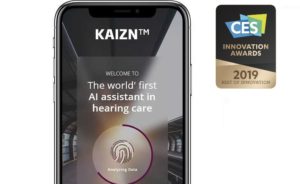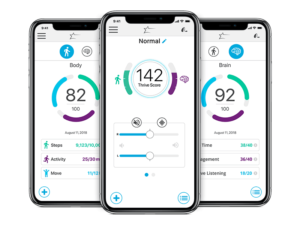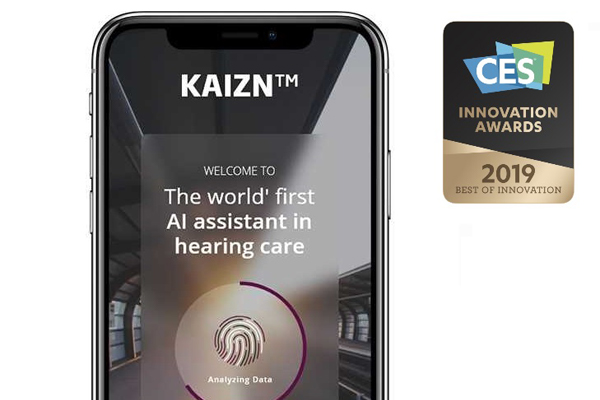Hearing Aids as a Home for Smart Assistants – The Hearables Market Expands
One of the areas that is quietly undergoing a smart assistant-driven makeover is the world of hearing aids. In order to undergo this transformation to enable smart assistants to be accessed via the devices, hearing aids had to first become tethered to the smartphone. Bluetooth hearing aids, which came to market in late 2013, have steadily become the norm and a standard feature among the vast majority of the recent offerings from each of the five major hearing aid manufacturers. By extending the smartphone’s capabilities, app economy and processing power to the hearing aids via Bluetooth, hearing aid manufacturers are beginning to introduce new features with their newest hearing aids through the devices’ companion apps. One new feature that is gaining in popularity is smart assistant access.

Oticon Kaizn at CES 2019/Oticon
Among the five major hearing aid manufacturers, three have recently introduced a personal assistant aspect to their hearing aids. The first to do so was Danish manufacturer, Oticon, which introduced Kaizn, “the world’s first AI personal assistant for your ears.” Right on the heels of this announcement, fellow Danish manufacturer, GN Resound, announced at CES 2019 that a Siri app integration will soon be available for a number of its hearing aids, through an app update. Finally, the lone American manufacturer of the five, Starkey, announced at CES that it will be introducing its Thrive personal assistant, through its Thrive app for its new line of Livio AI hearing aids.
Machine Learning for a Better Hearing Aid Experience
Hearing aids have multiple program settings that can be toggled by the user based on the environment they are in. For example, a user will want the microphones and amplification settings tweaked differently when at home alone, in a noisy restaurant, outside at a music venue, or a variety of other settings.
An interesting element of both GN Resound’s Siri integration and Oticon’s Kaizn is that there will be an element of machine learning to go along with the smart assistant. The device will sense when a new acoustic environment is detected and then prompt the user via the assistant to toggle to a new program that it recommends based on what the device is sensing. Over time, the device will learn the user’s preferences and automatically toggle between programs. This means that users can enter in and out of various acoustic environments and have their hearing aid seamlessly toggle between settings for them. This should lead to a better overall experience for the user courtesy of machine learning.
Fielding General and Local Queries Using Multiple Assistants

Thrive Hearing Control app by Starkey
The hearing aid assistants do not seem to aspire to be an alternative to the main assistants that people access today: Alexa and Google Assistant. Rather, as Starkey’s Thrive demonstrates, the idea is to specialize in hearing aid-specific queries, such as, “how much battery do I have left?” or, “which program setting am I on?” those questions will be fielded by Thrive locally, meaning that the query does not go to the cloud. However, if you want to ask general questions such as, “what is today’s weather forecast?” those queries will go to the cloud and get fielded by Google Assistant. GN Resound’s Siri integration will operate similarly, where Siri will respond to both hearing aid-specific questions and general questions.
Work in Progress
Just as we’re in the early days with Voice as a whole, we’ are at “day one” with the idea of our hearing aids serving as a home for smart assistants. It makes sense for smart assistants to be housed in hearing aids given that adults 55 and older represent one of the fastest growing cohorts of smart speaker and voice assistant adoption, according to Deloitte.
These first forays into utilizing smart assistants in conjunction with hearing aids aim to enhance the user experience through machine learning as well as providing answers to general and hearing aid-specific queries. Today, this means hearing aids are becoming part of the larger hearables market with both specialized features and access to popular consumer voice assistants. The ear is one of the most intriguing new access points where voice assistants are seeing adoption. Hearing aids are uniquely positioned to popularize these features among users because they already own the ear real estate.
Competing For Ear Share – Apple AirPods, Google Pixel Buds, and Amazon Alexa









